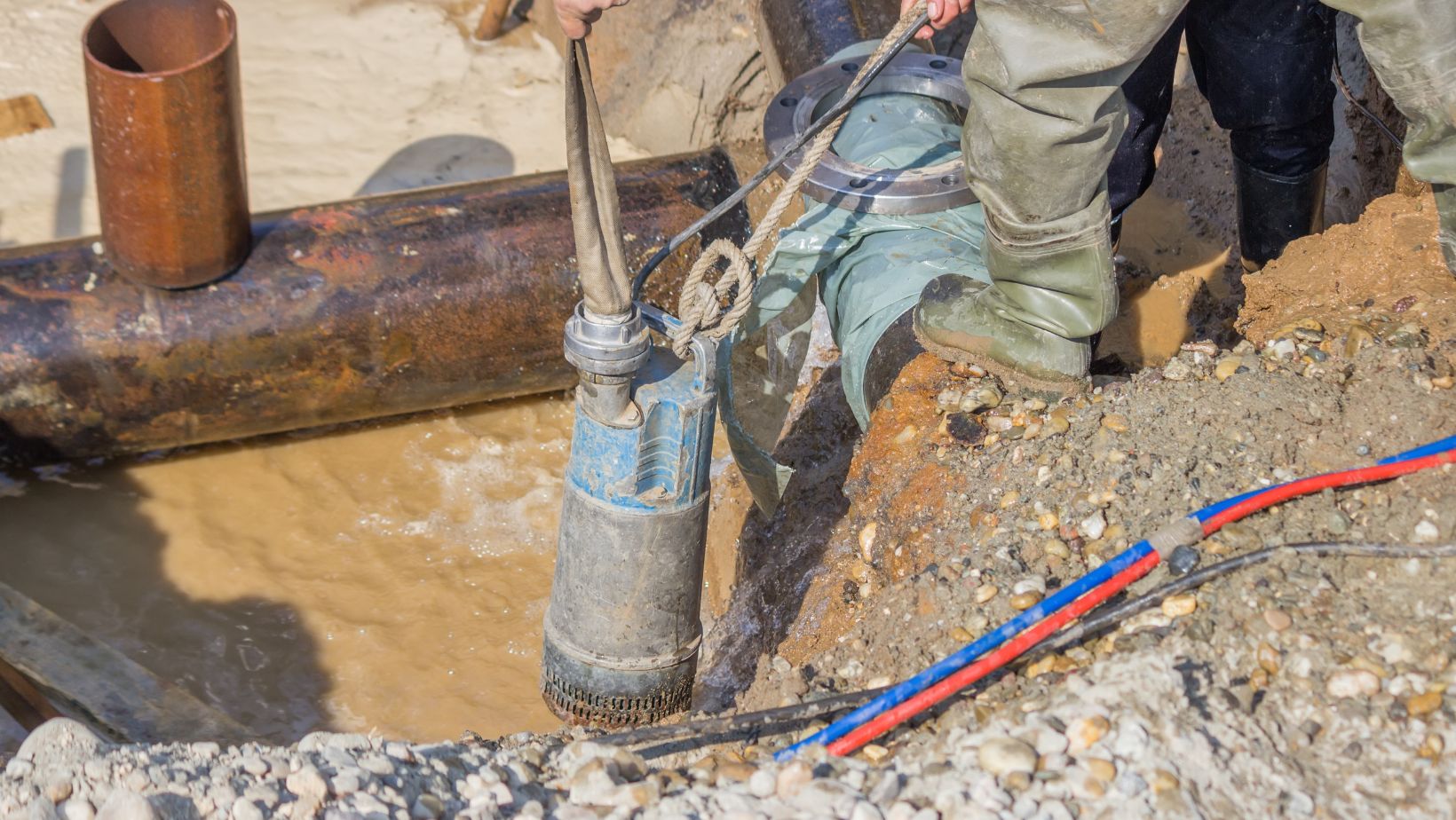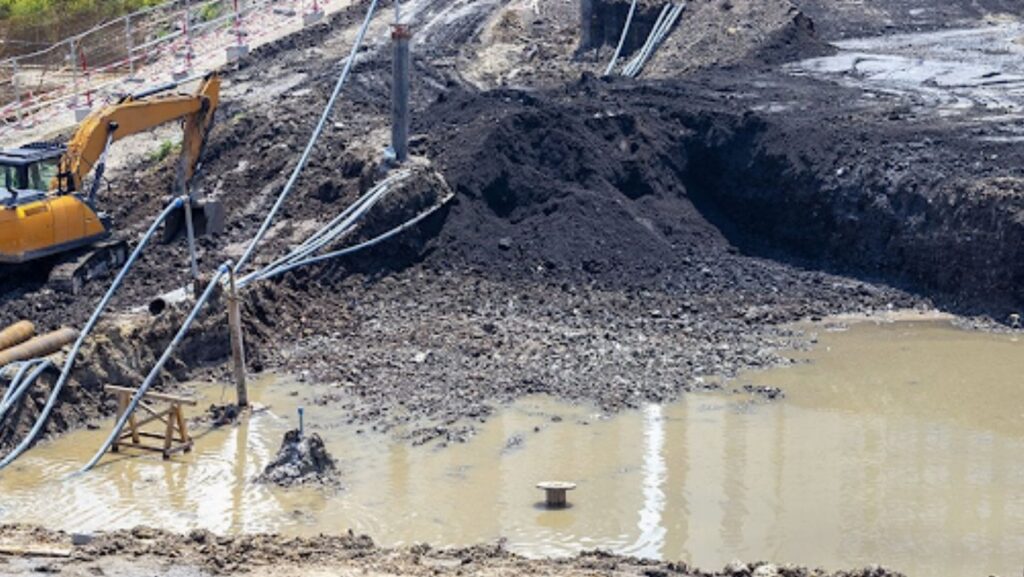Introduction to Dewatering in Construction
Excess water on construction sites is more than just a nuisance; it poses a serious operational problem that may interrupt project timetables, jeopardize structural integrity, and increase costs. Effective construction site dewatering is essential for ensuring a safe, dry, and productive workplace.
Dewatering pumps play an important part in resolving this issue. These specialized pumps are used to remove or manage groundwater and surface water from building sites, increasing efficiency and assuring project continuity. This tutorial looks at how dewatering pumps improve construction site performance, including methods, equipment alternatives, and efficiency considerations.
Core Benefits of Using Dewatering Pumps on Site
Using dewatering pumps brings numerous advantages that collectively boost construction site efficiency:
- Improved Site Safety: Excess water can cause slips, unstable ground, and equipment malfunctions. Dewatering pumps eliminate standing water and reduce safety hazards.
- Reduced Project Delays: Delays due to water accumulation are minimized, allowing for uninterrupted excavation and foundation work.
- Enhanced Soil Stability: Removing water from saturated soils helps stabilize foundations, particularly for deep excavations.
- Faster Turnaround: Projects progress faster when water is effectively managed, improving workflow and productivity.
- Regulatory Compliance: Many jurisdictions require proper water management to avoid environmental damage. Dewatering helps meet these standards efficiently.
Common Dewatering Pump Applications
Dewatering pumps are versatile tools used across various stages and types of construction projects. Some of the most common dewatering pump applications include:
- Excavation Sites: Pumps clear accumulated water from trenches and excavated areas, allowing machinery and laborers to operate efficiently.
- Foundation Work: Water removal is critical when pouring concrete or working below the water table, ensuring the structural integrity of the foundation.
- Tunneling and Mining Projects: Dewatering pumps manage inflow from surrounding groundwater, ensuring dry and safe conditions underground.
- Utility Installations: When installing sewer lines, water mains, or electrical conduits, pumps remove groundwater to create accessible working conditions.
- Emergency Flood Control: During unexpected weather events, portable dewatering pumps can mitigate flooding quickly and protect materials and infrastructure.
Key Construction Dewatering Methods
Understanding the different construction dewatering methods is essential for choosing the right system based on site-specific conditions.
- Sump Pumping
- The simplest method involves pits or sumps dug at low points in the site.
- Water collects naturally and is pumped out.
- Best suited for shallow excavations with relatively low water inflow.
- Wellpoint Systems
- A series of small-diameter wells connected to a header pipe and a vacuum pump.
- Ideal for lowering the water table in sandy or silty soils.
- Allows continuous dewatering around larger excavations.
- Deep Well Systems
- This process involves drilling deep wells and installing submersible pumps to extract groundwater.
- Effective for high-volume dewatering and deep excavations.
- Suitable for permeable soils.
- Eductor Systems
- Use high-pressure water and a venturi system to draw water from the soil.
- Efficient in fine-grained soils like silts and clays.
- This approach is often used when traditional systems are ineffective.
Comparison Table of Construction Dewatering Methods
| Method | Suitable Conditions | Max Depth | Equipment Required | Cost Level |
| Sump Pumping | Shallow, low water inflow | <3 meters | Sumps, pumps, hoses | Low |
| Wellpoint System | Sandy/silty soils | 4–6 meters | Wellpoints, vacuum pumps | Medium |
| Deep Well System | High water inflow, deep | >6 meters | Boreholes, submersible pumps | High |
| Eductor System | Silts/clays | Up to 10m | Eductors, pressure pumps | High |
Choosing the Right Dewatering Equipment for Construction
Selecting appropriate dewatering equipment for construction is a critical decision that influences project efficiency and safety.
Factors to Consider:
- Soil Composition: Determines the dewatering method (e.g., sandy soils favor wellpoint systems, clay soils may need eductors).
- Water Table Level: Deep wells or submersible pumps are better for high water tables.
- Flow Rate Requirements: High inflow rates demand robust, high-capacity pump systems.
- Project Duration: Longer projects may justify investment in permanent or semi-permanent systems.
Equipment Types:
- Centrifugal Pumps: Common for sump pumping; ideal for moving large volumes quickly.
- Submersible Pumps: Operate while submerged; great for deep wells and high-pressure scenarios.
- Trash Pumps: Handle water with debris; suitable for stormwater and flood response.
- Electric vs. Diesel: Electric pumps offer quiet operation and efficiency; diesel provides mobility and independence from grid power.

By aligning equipment selection with site needs, contractors can avoid underperformance or system failure.
How Dewatering Pump Efficiency Impacts Site Productivity
Dewatering pump efficiency is a key performance metric that directly correlates with time, energy consumption, and cost.
Efficiency Factors:
- Flow Rate vs. Power Consumption: A pump’s ability to move water while minimizing energy use determines cost-efficiency.
- Pump Head Performance: Higher head capacity allows pumps to lift water from deeper excavations without performance loss.
- Durability and Maintenance: Durable pumps with low maintenance needs reduce downtime and repair costs.
Ideal Practices to Maximize Efficiency:
- Use variable frequency drives (VFDs) for better control over pump speed.
- Match pump size to actual demand to avoid overuse or underperformance.
- Schedule regular inspections to prevent unexpected failures.
Properly maintained, energy-efficient dewatering pumps reduce operational costs and keep projects on schedule.
Temporary Dewatering Systems: Use Cases & Advantages
Temporary dewatering systems offer flexible and cost-effective solutions for short-term or evolving site conditions.
When to Use:
- During early-stage excavation or foundation work.
- In response to unanticipated groundwater intrusion.
- For mobile or remote projects where portability is essential.
Advantages:
- Mobility: Easily transported and installed across multiple job sites.
- Speed: Rapid setup and removal reduce downtime.
- Cost Savings: Ideal for projects where permanent infrastructure isn’t feasible.
Contractors benefit from temporary systems’ adaptability, especially in fast-paced environments or locations with unpredictable weather.
Best Practices for Construction Site Dewatering
To ensure successful dewatering operations, adhere to the following best practices:
- Plan Early: Conduct thorough site assessments, including soil testing and hydrological studies.
- Comply with Regulations: Understand local discharge requirements and environmental restrictions.
- Use Sediment Controls: Employ filters, tanks, or sediment bags to prevent contamination.
- Monitor Systems: Regularly check pump performance, water levels, and flow rates.
- Maintain Equipment: Schedule routine maintenance to ensure continuous operation.
Effective implementation of these practices minimizes risk and improves both short- and long-term project outcomes.
Conclusion
Dewatering pumps serve as essential tools for modern construction, allowing for better water management, increased safety, and more project control. From excavation to foundation construction, these pumps maintain dry conditions that allow for timely and cost-effective project completion.
Contractors can significantly enhance operational performance by understanding various construction dewatering processes, selecting appropriate dewatering equipment, and optimizing dewatering pump efficiency. Whether through temporary dewatering systems or long-term groundwater control solutions, strategic water management is critical to building site efficiency.
Proper planning, equipment selection, and maintenance not only help eliminate water but also overcome hurdles to development.


More Stories
Psychological Bridge or How Social Casinos Shape Real Money Gambling Behaviors
Pros and Cons of Desktop and Mobile Casino Gaming in 2025
Progressive Jackpot Terms and the Fine Print Players Skip